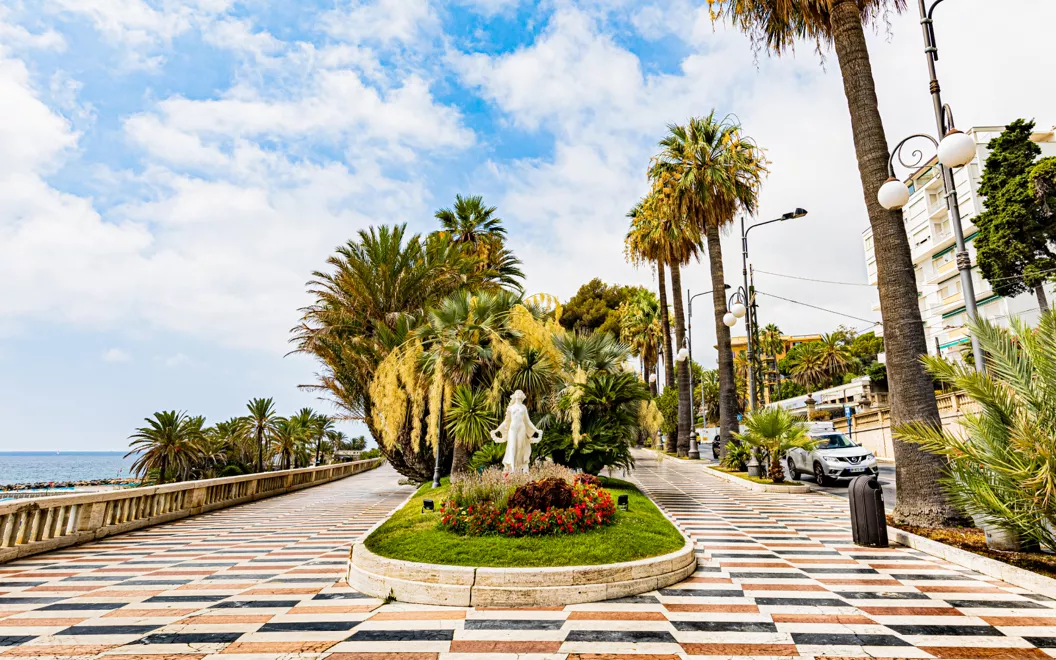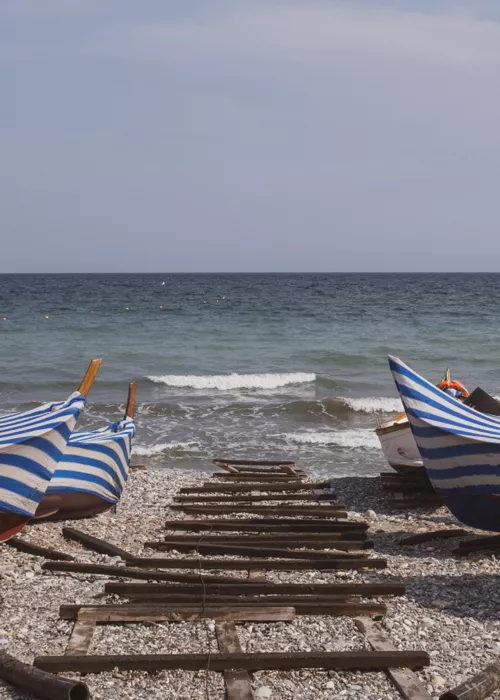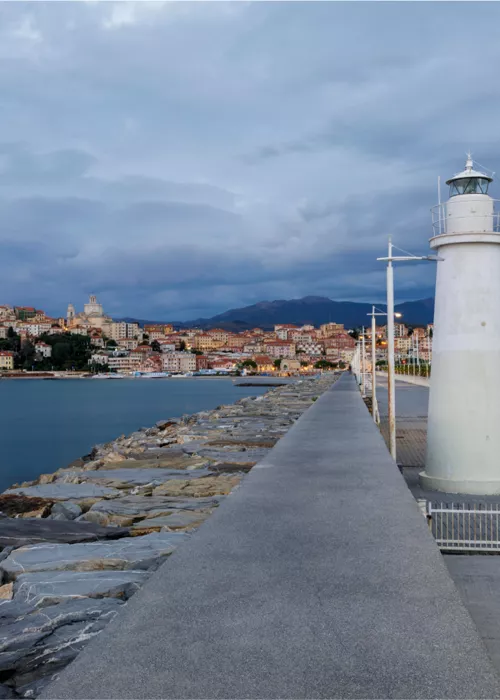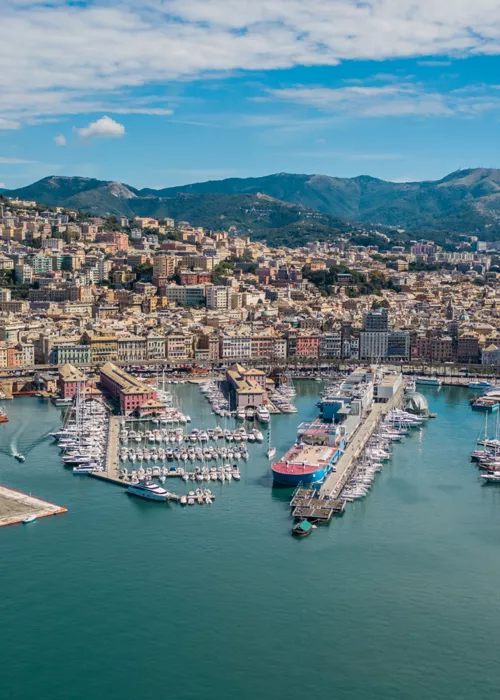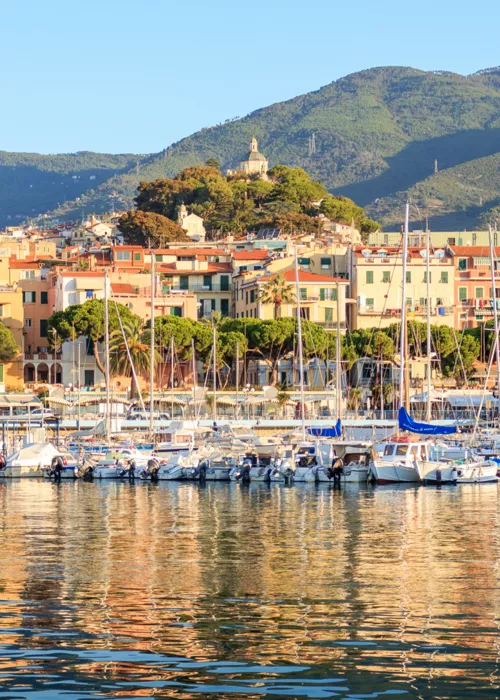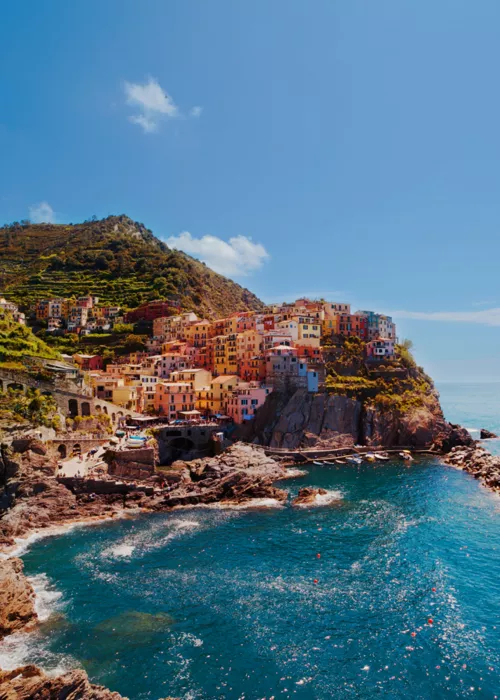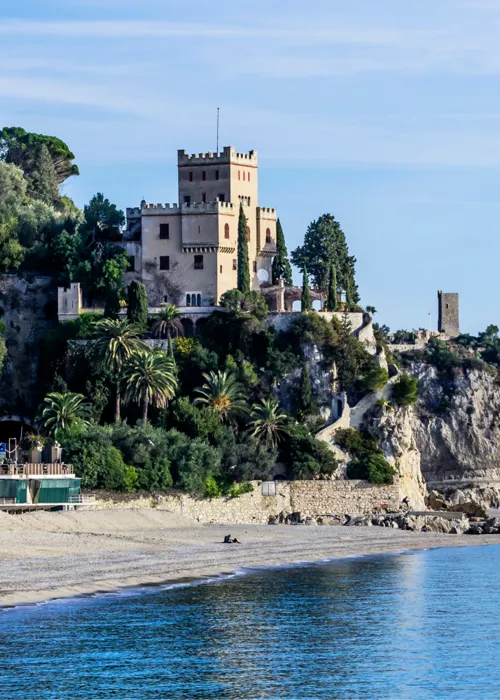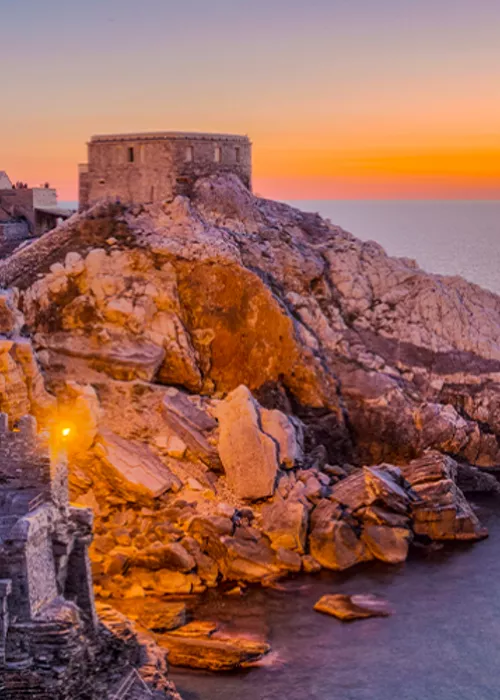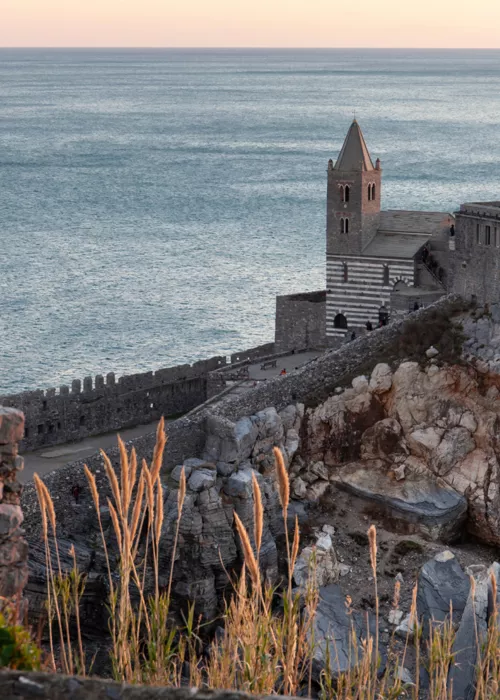Sanremo

Sanremo, the city of flowers, with its Fin de Siècle atmosphere and mild climate all year round. Beloved by monarchs, aristocrats and the upper classes, in the late 19th century it was frequented by Tsarina Maria Aleksandrovna, Princess Sissi and Alfred Nobel, the inventor of the prestigious prize, who built his fanciful villa here.
Sanremo is also the city of Italian song, ever since Nilla Pizzi won Italy's biggest song festival with Grazie dei fior in 1951. From the Art Nouveau palaces to the whimsical onion-domed Russian church, and the fairytale gardens of Villa Ormond to some of the most beautiful and ancient sailing centres in Italy, Sanremo offers an intriguing mix of history and modernity, with many other aspects as well. The town attracts sports fans with the rally and the Milan-Sanremo, the famous bike race in which the greatest cycling champions have competed, and it has also been famous since the early 20th century for its Casino, with green tables, roulette and slot machines that are still jingling today.
Take time to lose yourself in the medieval heart of the city, the district known as Pigna, built in concentric rings and protected by several circles of walls erected over time to protect the ever-expanding settlement from pirate raids. Among the narrow streets you can see numerous testimonies to the past and to popular devotion, preserved as if in a jewel box: the 16th-century Oratory of San Sebastiano, the Gentile-Spinola palace, the Oratory of San Costanzo and Piazza di Santa Brigida, a meeting place and venue for numerous social and cultural events.
Passing through the Giardini Regina Elena, created in honour of Queen Elena of Montenegro, wife of King Victor Emmanuel III, who was a regular guest of the city of flowers, we reach the Belvedere della Madonna della Costa, with its view over the city and the splendid Ligurian sea.
Sanremo is also a renowned seaside resort, with elegant beach facilities, as well as completely free, wide, sandy beaches that are popular with young surfers and have earned two Sails from the Italian Touring Club and Legambiente.
Bordighera

With its vaguely exotic, oriental-like splendour, Bordighera is the 'city of palm trees'. It was probably Phoenicians and Arab pirates who imported the seeds of the date palms, typical of African and Middle Eastern oases, and sowed them in an extensive palm grove, which can now be seen along the Beodo Trail. In later times, Antonio Ruffini's 19th-century novel Doctor Antonio, a gripping love story set in Bordighera, spread the town's fame across the English Channel. Its enchanting descriptions of the year-round sun-kissed Riviera attracted a colony of British tourists even larger than the local community. Indeed, many cultural personalities felt its call: Charles Garnier, the architect of the Paris Opera, Queen Marguerite of Savoy, the father of French Impressionism Claude Monet, who was absolutely charmed by it all, and Clarence Bicknell, the British mathematician to whom the Natural History Museum is dedicated. It was thanks to their presence that the town was replanned, with tree-lined avenues, aristocratic villas and lush gardens of exotic plants. Suffice it to mention Villa Regina Margherita, a residence of regal elegance, or Villa Garnier, standing in front of the small port of Arziglia with it gardens beyond description, or Villa Pompeo Mariani, the house museum and studio of the famous landscape painter from Monza who moved there. It was here that Claude Monet, delighted by the magic of the landscape, painted some of his masterpieces, including Garden at Bordighera. Still on the subject of gardens, the Exotic Garden of Pallanca, entirely dedicated to succulent plants, is simply marvellous. And if that were not enough, there are the beaches, awarded the sail of the Italian Touring Club and Legambiente, with round pebbles that alternate between free stretches and resorts with good facilities. Less frequented spots are Arziglia beach, in what was once a small fishing port, and the rocks at Cape Sant'Ampelio, from which you can dive straight into the clean water.
Taggia

A few kilometres from the sea, the green and narrow Argentina valley is dotted with towns of rugged charm. One of these is Taggia, a flagship town off the coast that stands within 16th-century walls. It is famous as the home of the Taggiasca olive, for the Convent of St Dominic, a harmonious synthesis of art, history and theology, for its medieval bridge with sixteen arches and for its seaside district, Arma di Taggia. With a shallow sandy shore, free and organised sandy beaches, a small marina and clean water, Arma di Taggia has earned three Sails from the Italian Touring Club and Legambiente for its water purity, environmental quality and sustainability. The town particularly comes alive on the last Sunday in July with the feast and procession of St Erasmus, patron saint of seafarers.
Cervo

Swimming while gazing upwards: this is what you often end up doing on Cervo beach, as you turn from the sea to admire the view of the cluster of houses in the medieval village perched on the hillside, with its colourful alleyways and craft shops. There, among the waves, you can admire that unmistakable silhouette, dominated by Clavesana castle, with the church of St John the Baptist, a notable expression of Ligurian Baroque. It is also known as the Corallini Church as it was built with the proceeds from the coral fishing companies that arrived from Corsica and Sardinia. Piazzetta dei Corallini, as picturesque as it is lively, comes alive especially in summer when, from mid-July to August, it hosts numerous events, culminating in the famous International Chamber Music Festival. The sea is no less impressive and offers great variety: there are bathing establishments with sand, free sand and pebble beaches also suitable for children to swim in, and beautiful cliffs on which to lie in the sun. The best known are the Porteghetto and Ciappellette cliffs to the east of the shoreline, while those further east are only accessible by boat. Thanks to the predominantly rocky seabed, thewater is transparent and the environmental quality has earned two Sails from the Italian Touring Club and Legambiente.


